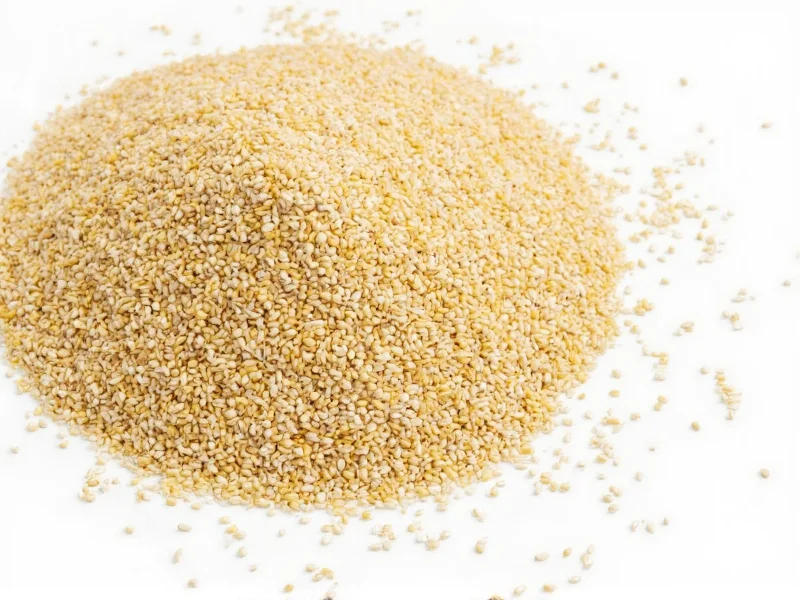Sesame seeds represent one of the oldest oilseed crops in human history, with a fascinating journey from their African origins to global cultivation. Understanding where sesame comes from requires examining both its botanical origins and historical cultivation patterns that shaped its worldwide distribution.
The Ancient Origins of Sesame
Scientific research and archaeological findings confirm that wild sesame (Sesamum indicum) originated in East Africa, particularly in regions that now comprise modern-day Ethiopia and Sudan. Genetic studies of wild sesame varieties point to this area as the plant's evolutionary birthplace. From these African origins, sesame made its way to ancient India, where it became deeply integrated into early agricultural systems.
The earliest documented evidence of sesame cultivation appears in cuneiform records from ancient Mesopotamia around 4,000 years ago, where it was called ilu and highly valued for its oil. Egyptian tomb paintings from 3,500 years ago depict sesame being used in religious ceremonies and as a food source. The famous phrase "Open Sesame" from Middle Eastern folklore reflects the plant's historical significance in that region, referring to how sesame pods naturally split open when ripe.
Historical Spread of Sesame Cultivation
Sesame's journey from its African homeland followed ancient trade routes that connected civilizations across continents. The plant's remarkable drought tolerance and ability to grow in poor soils made it an ideal crop for traders and settlers moving through arid regions.
By 2000 BCE, sesame had reached the Indus Valley civilization, where it became known as tila in Sanskrit. Ancient Indian texts like the Charaka Samhita (circa 300 BCE) documented sesame's medicinal properties. From India, sesame cultivation spread eastward to China by 400 BCE and eventually to Southeast Asia and Japan.
The transatlantic slave trade inadvertently introduced sesame to the Americas, where enslaved Africans brought knowledge of this versatile crop. In the United States, sesame became established in the southeastern states during the 18th century, though commercial production didn't begin until the 20th century.
Modern Sesame Production Around the World
Today, sesame cultivation spans tropical and subtropical regions across six continents. The plant thrives in warm climates with well-drained soils and requires approximately 90-120 frost-free days to reach maturity. Modern agricultural techniques have expanded sesame production beyond its traditional growing regions.
| Top Sesame Producing Countries | Annual Production (Metric Tons) | Percentage of Global Production |
|---|---|---|
| Sudan | 850,000 | 18% |
| Myanmar | 780,000 | 16% |
| India | 750,000 | 15% |
| Tanzania | 350,000 | 7% |
| Burkina Faso | 300,000 | 6% |
While Africa remains the historical birthplace of sesame, Asia now dominates global production. India leads in terms of cultivated area, while Sudan typically ranks highest in total production volume. The crop's importance to smallholder farmers in developing countries cannot be overstated—sesame provides critical income for millions of farming families in regions where few other cash crops thrive.
Botanical Characteristics of the Sesame Plant
Sesame (Sesamum indicum) belongs to the Pedaliaceae family and grows as an annual herb reaching 50-250 cm in height. The plant produces trumpet-shaped flowers that range from white to purple, which develop into distinctive rectangular seed pods. These pods contain hundreds of tiny seeds that range in color from ivory to deep brown.
One of sesame's most remarkable features is its natural dehiscence—the mature pods split open to release seeds. While this characteristic helped with natural propagation, it presented challenges for mechanical harvesting, leading to the development of dehiscence-resistant varieties in modern agriculture. Sesame seeds contain 40-60% oil, primarily composed of healthy unsaturated fats, which explains their historical value as an oilseed crop.
Cultural Significance Across Civilizations
Sesame's journey through human history reveals its profound cultural significance. In ancient Babylon, soldiers consumed sesame seeds for strength before battle. Egyptian papyri document sesame oil as both a culinary ingredient and medicinal treatment. Traditional Chinese medicine has used sesame for over 5,000 years to treat various ailments.
In Hindu tradition, sesame seeds symbolize immortality, and they play important roles in religious ceremonies. The Middle Eastern condiment tahini, made from ground sesame seeds, has been a dietary staple for millennia. Across Africa, sesame remains integral to traditional dishes and cultural practices, maintaining its connection to the plant's ancestral homeland.
Understanding Sesame's Global Journey
The story of where sesame comes from extends beyond simple geography—it represents one of humanity's earliest agricultural partnerships. From its East African origins, sesame traveled ancient trade routes, adapting to diverse climates while maintaining its nutritional and economic value. Modern genetic studies continue to reveal new insights about sesame's evolutionary history and domestication process.
Today's global sesame industry builds upon thousands of years of cultivation knowledge, with contemporary research focused on improving yield, disease resistance, and mechanical harvesting capabilities. Despite technological advances, many small-scale farmers in developing countries still harvest sesame using traditional methods that have changed little since ancient times.











 浙公网安备
33010002000092号
浙公网安备
33010002000092号 浙B2-20120091-4
浙B2-20120091-4